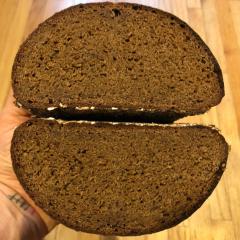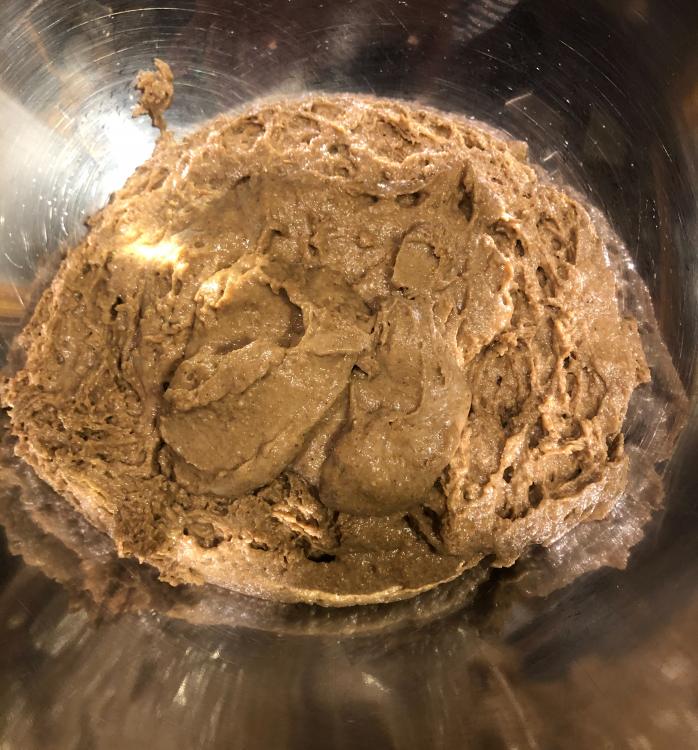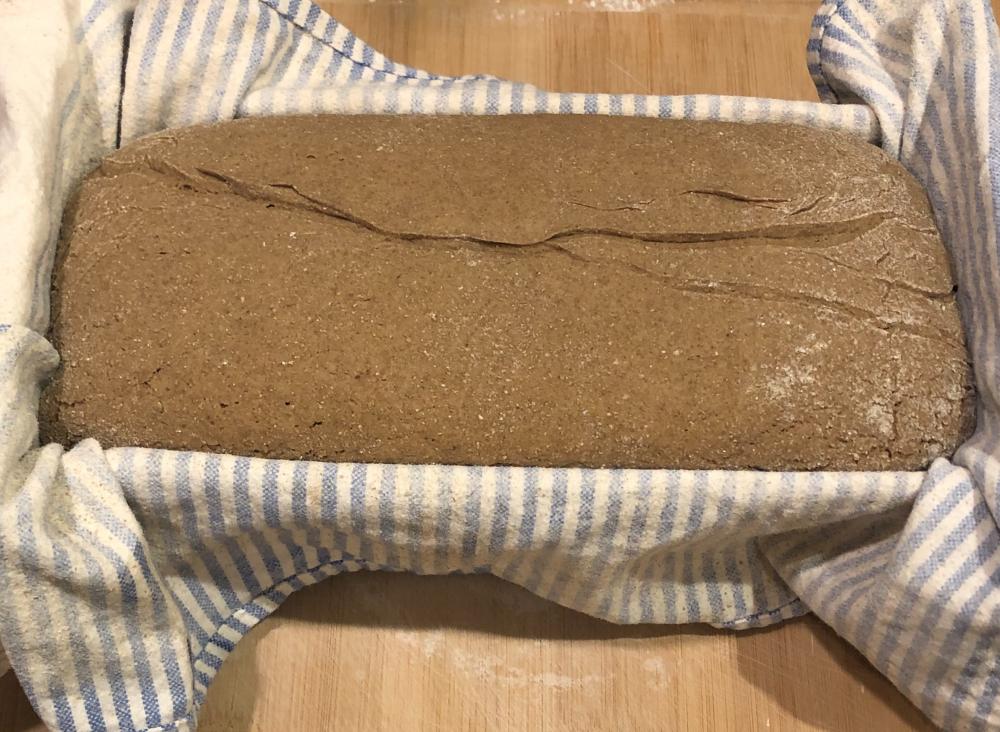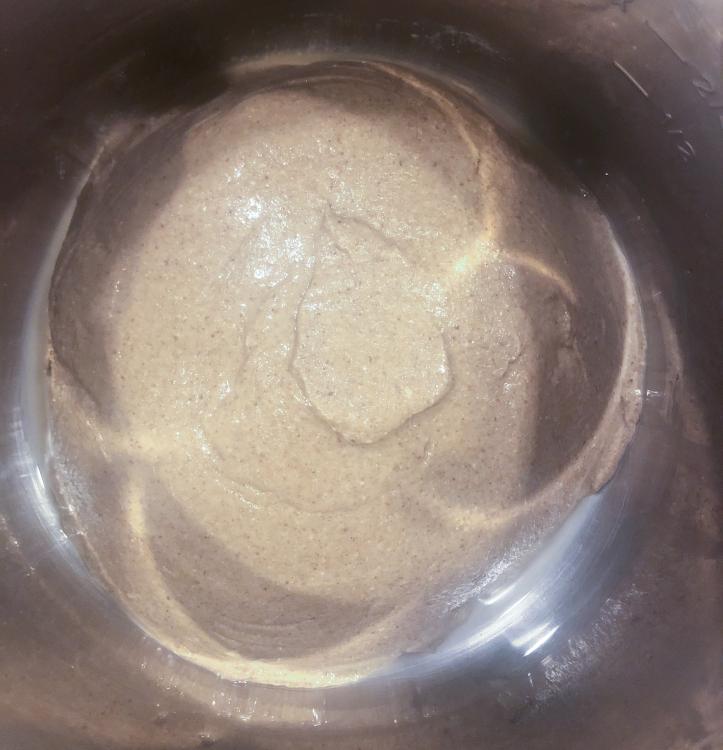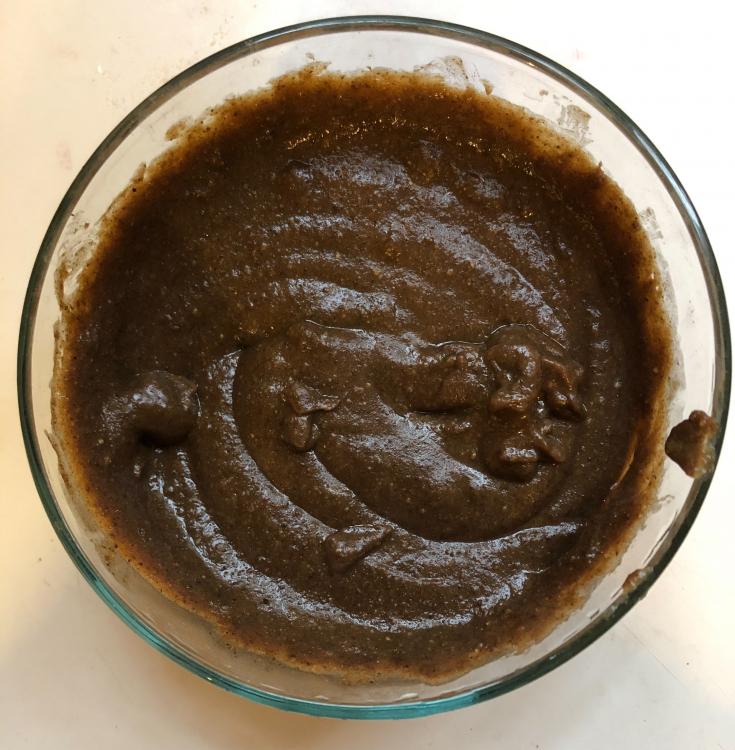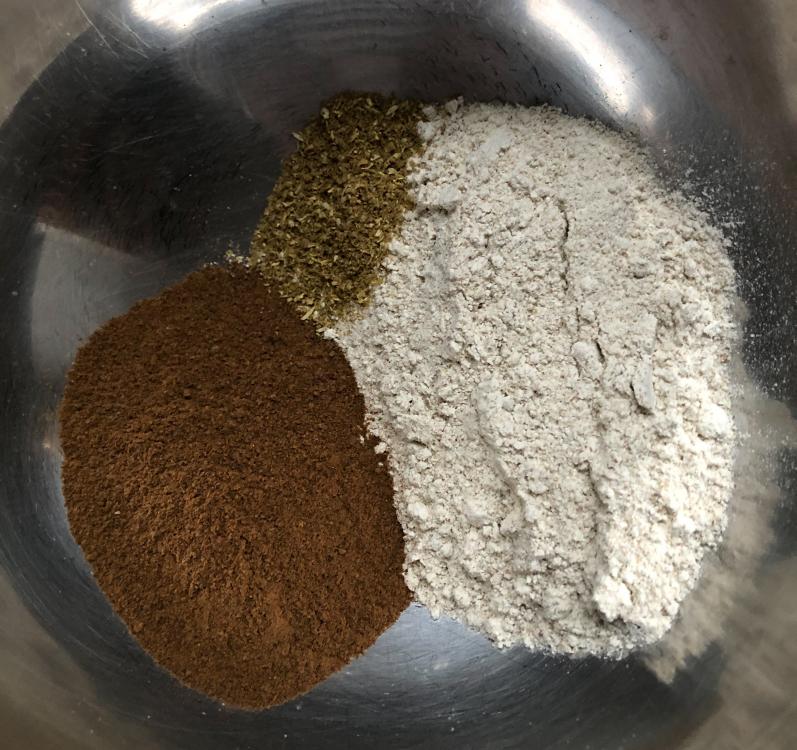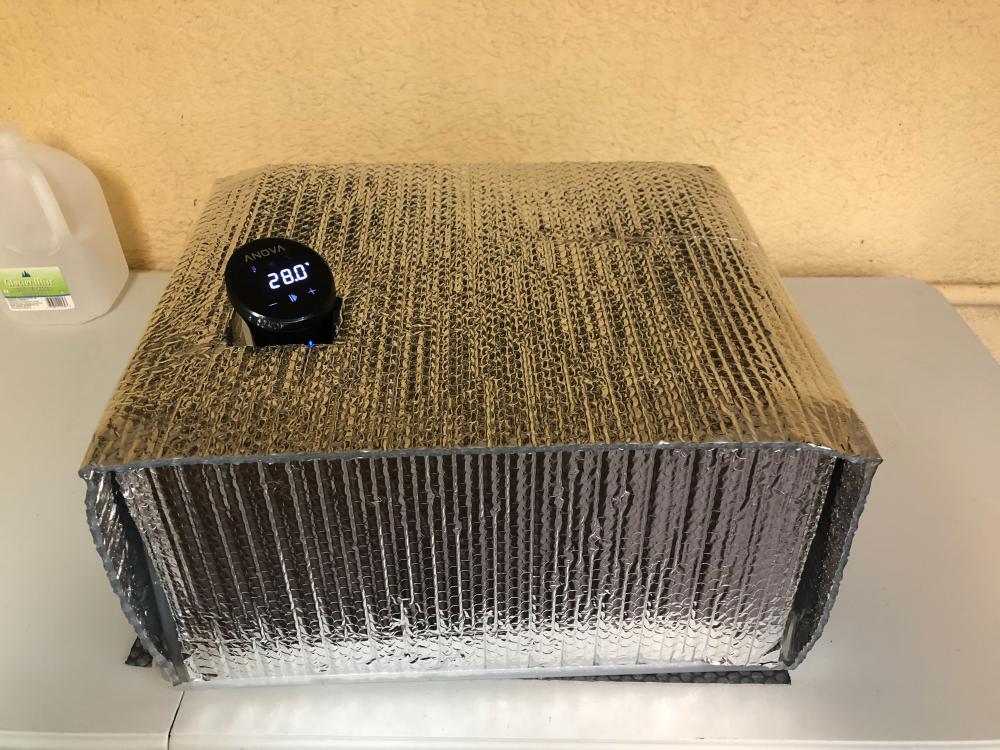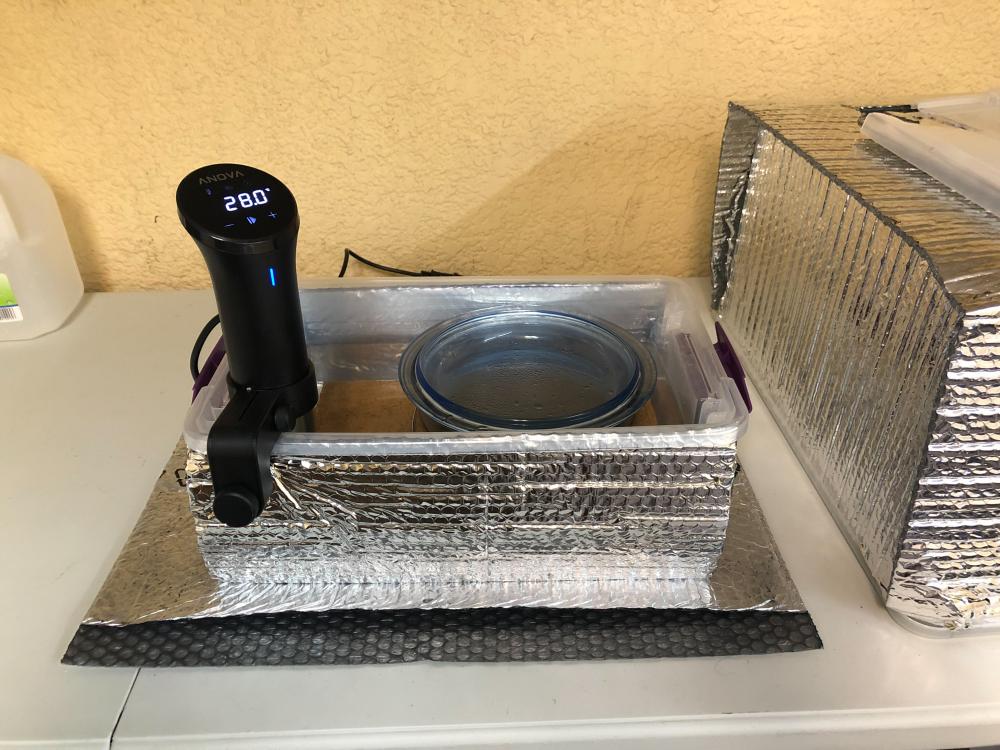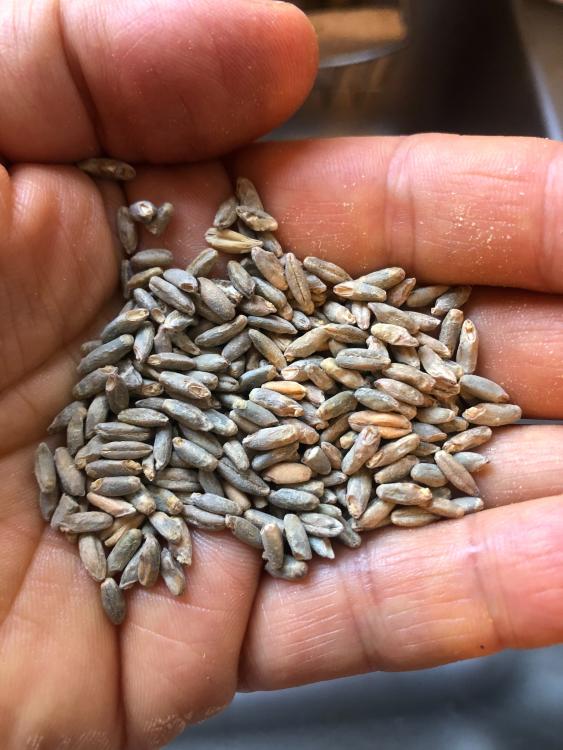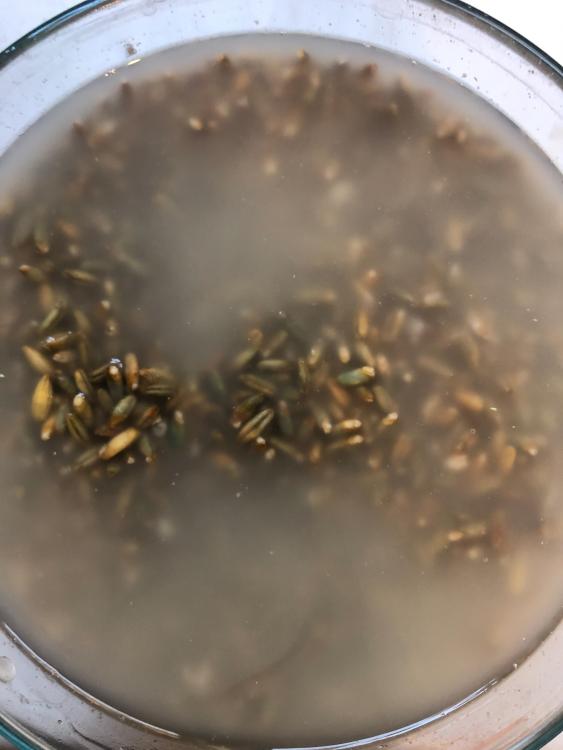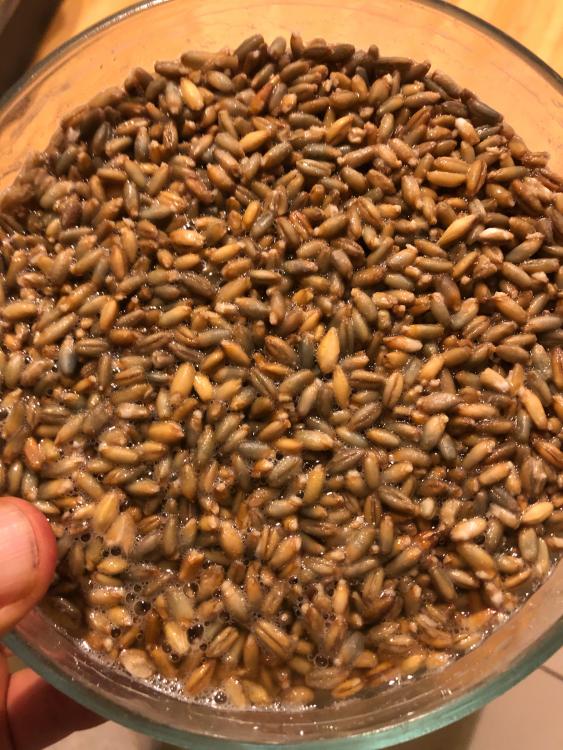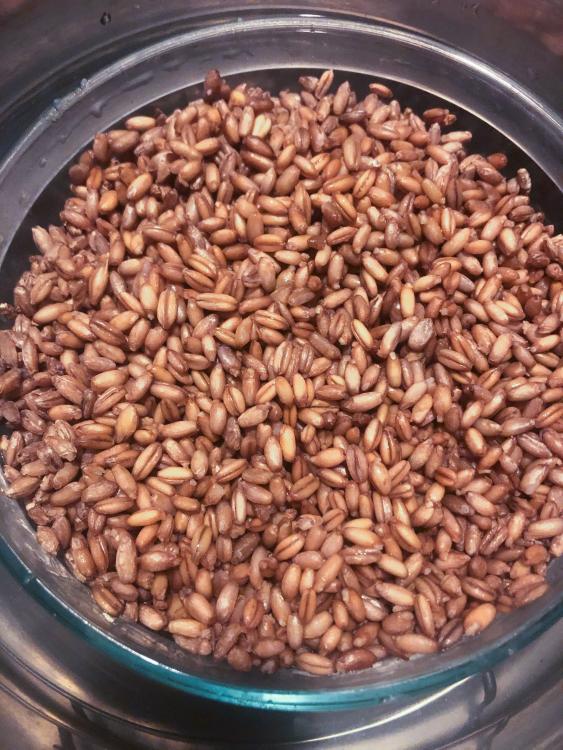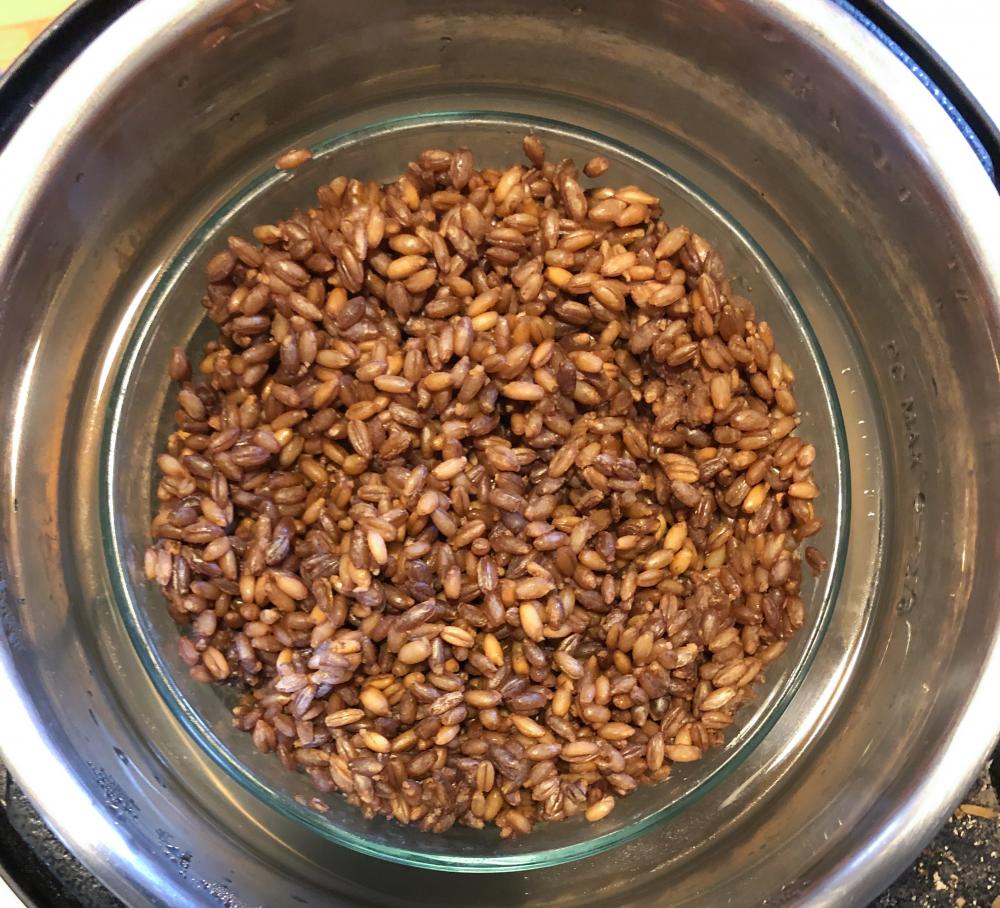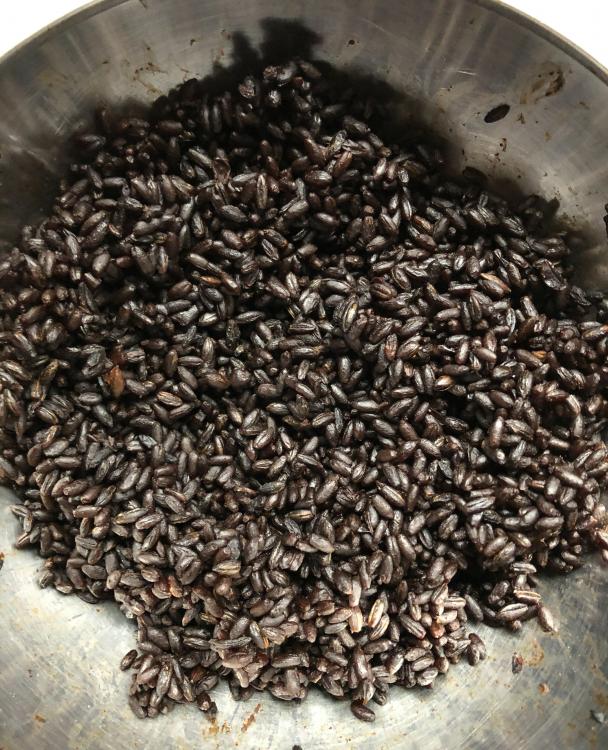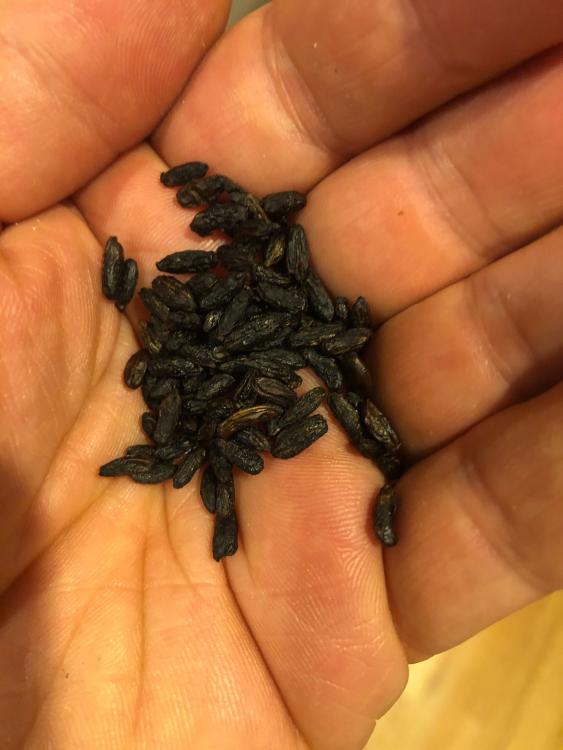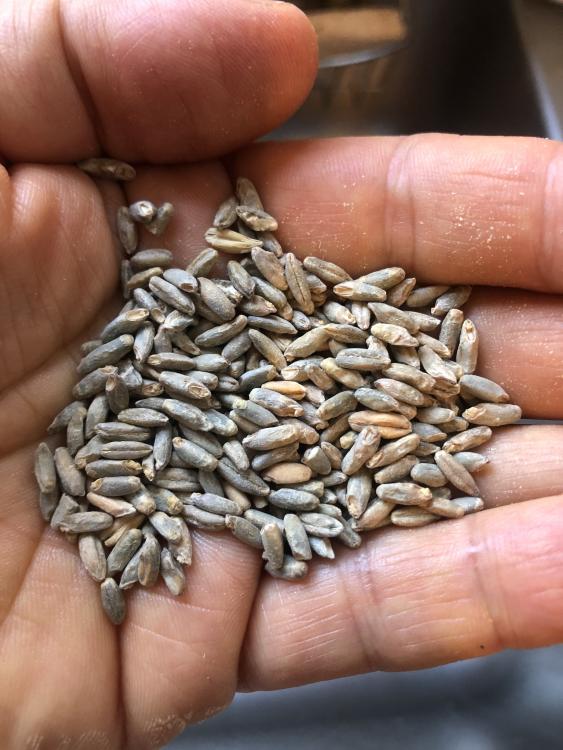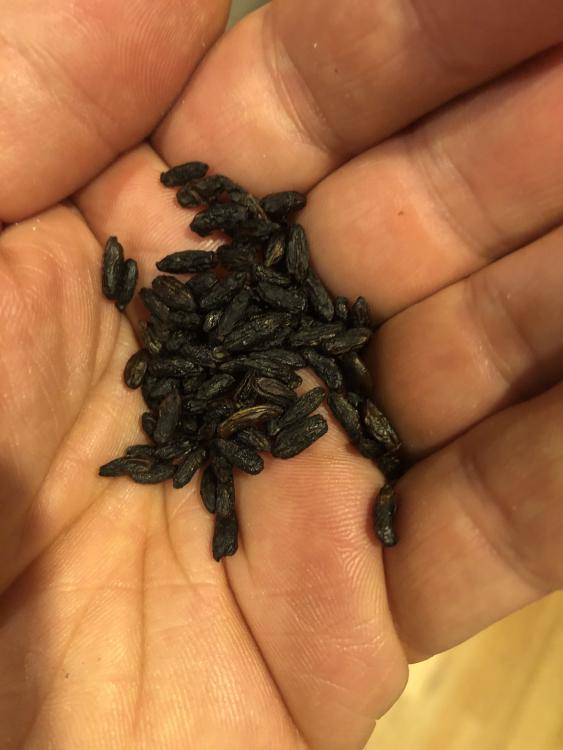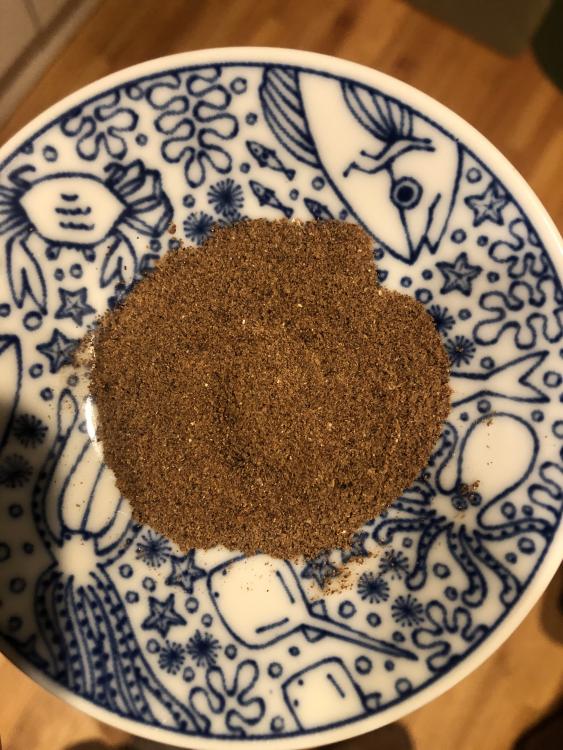-
Posts
25 -
Joined
-
Last visited
Contact Methods
-
Website URL
oicherman.art
Profile Information
-
Location
Minneapolis, MN
Recent Profile Visitors
The recent visitors block is disabled and is not being shown to other users.
-
Putting my new fermentation rig to work, did a twist on Borodinski inspired by this rus brot's experiment. 8 hours scald with coriander, caraway and two malt ryes (fermented and not), 24 hours fermentation, and a mistake in hydration calculation leading to runny dough and cracked bread. Very deep dense flavors with pronounced spices, delicious. They say such bread should stand for 1-2 days before consumption, but who's got patience. Scald ingredients (coriander is milled with the fermented malt) Adding starter after 8 hours + cooling Scald after 24 hours of fermentation Opara (pre-dough) Dough
-
I wonder what is other's experience with using fresh vs. aged rye flour? I hear statements in favor of both.
-
Linking this fermented malt rye topic here too - a successful experiment in producing it DIY. Can be useful to non-EU rye bakers who can't get the stuff off shelf.
-
Used starter. Process from here.
-
That oven does precisely what I need! just at X4 price tag:) Next stage I guess
-
What's APO? It keeps a steady (up to 210F, within ~1F) set temperature for a set period of time, for ~$150.
-
I figured how to make my own fermented malt rye, so here's my first Borodinsky bread with it. It's a dark and dense scalded bread spiced with coriander. The fermented malt intensifies the rye flavor and darkens the color. The result is quite good for the first attempt; should work on getting deeper flavors and characteristic deep black crust. (The wiki tells several versions of the origin story; I tend to believe the last one - that it was probably invented by the Soviet food engineers.) Scald ingredients Zavarka (scald) Opara (fermented scald), before fermentation Opara after fermentation Proofed
-
Eventually I could not find a suitable off-the-shelf solution, and had to build a rig of my own. It's based on the Anova Precision Cooker, with addition of a couple of plastic boxes and thermal liner.
-
Some process documentation, from the second batch - the transformation is quite fascinating. The temperatures range from 140F in the fermentation stage to 170F in drying. Raw malt rye Beginning of fermentation 7 hours all liquid soaked up 19 hours, already beginning to brown 52 hours, getting darker 72 hours, almost black 94 hours. Charcoal black 125+ hours: ready!
-
Nice! I do wonder what the temp was. Judging by the very thin crust, prob. not higher than 200C?
-
First attempt at DIY fermented malt rye. 5 days of fermentation and slow drying at temperatures increasing from 140f to 190f, during which time the Maillard reaction transforms the grains from malt to something that looks charred, but smells caramel. Milled and scalded, it tastes like sour rye bread. Off to baking now!
-
I'm getting mine from Natural Way Mills, splitting delivery with a friend. As s rule I have to increase hydration by at least 5%, sometimes more, compared to the EU recipes. But mostly, my trouble is my ignorance:) I literally never baked before I started this less than a year ago, so had to start from learning the very basics. Unfortunately, the Rye Baker book gets some basics wrong, so that caused some troubles. Getting the right ingredients, or substitutes of right ingredients - such as for fermented malt rye or the traditional Russian sweetener ("patoka"), is another.
-
I started with the same book! But haven't had much luck with it. Most of what I have learned so far is coming from rus brot blog and youtube channel (in Russian). A throve of knowledge, the guy is truly unique. Heavy on technology, but with a specific focus on home baking. The flours are so variable. I zeroed in on a local (MN) supplier and just use their whole grain flour all the time, adapting all recipes to it.
-
I started with the same book! But haven't had much luck with it. Most of what I have learned so far is coming from rus brot blog and youtube channel (in Russian). A throve of knowledge, the guy is truly unique. Heavy on technology, but with a specific focus on home baking. The flours are so variable. I zeroed in on a local (MN) supplier and just use their whole grain flour all the time, adapting all recipes to it. Host's note: this discussion continues in the Pastry & Baking forum's topic Rye Bread: Tips, Techniques & Recipes, starting here.
-
No colorants:) The darkness comes naturally with some insane biochemistry of rye fermentation which I know little about. Eastern European breads also use great deal of malt rye of different kinds, which affect color too


